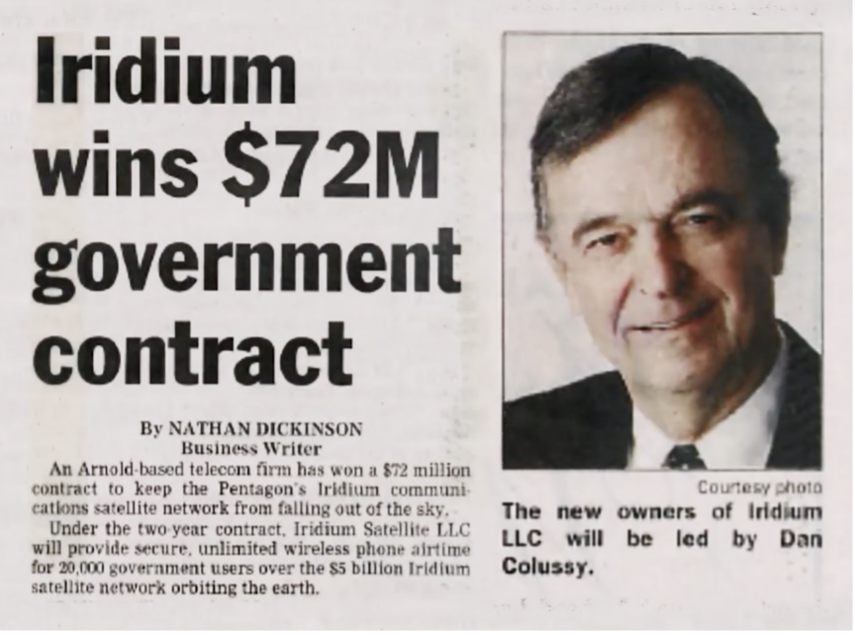Iridium Eras, Part 2: From Brink Of Deorbit To Monumental Hope

To celebrate Iridium’s 25th anniversary, we’re reflecting on the eras that made the company what it is today. From its iconic inception to infamous bankruptcy to its rise from the ashes, learn more about the world’s first and only truly global satellite network.
Ruh Roh.
Soon after activating the Iridium® network in November 1998, Motorola realized the numerous challenges they faced. The Iridium project was an idea ahead of its time. Creating the world’s first truly global network sounded like it would be a highly-sought-after service for voice and data needs—and it was—but not for the customer initially intended.
When the Iridium constellation was first built, the belief was the network would be used by international business travelers. Having the ability to call anyone from anywhere on the planet sounded great. At the same time, the lighter, smaller, and cheaper cell phone rapidly grew in service availability in the places people most often were: towns and cities. This led to the start of trying times for Iridium.

After financing such a large space technology project that involved 20 launches, Iridium needed to reach one million network subscribers in its first year to keep operations running. Nine months after launching its service, Iridium had only 62,000. After not seeing the return expected from customers less than two years after launching its service, Iridium found itself in bankruptcy court with a small group of investors doing anything possible to take over the network and prevent its fiery deorbit. If not for them, the Iridium we know today would not exist.
Back From the Brink
After nearly facing the deorbiting of its satellites in December of 2000, the reborn Iridium’s eventual first CEO, Dan Colussy, and other notable investors secured a two-year, multimillion-dollar contract with the U.S. Department of Defense (DoD). The partnership officially marked Iridium’s territory in the telecommunications industry and gave leaders the time needed to put together a new commercial market approach. Instead of focusing on the international business traveler, the newly formed leadership targeted specific markets where cell towers could not exist but reliable communications were essential. Vast areas of the Earth—including the oceans, airways, mountain ranges, and polar regions—had little to no connectivity until Iridium. This gave the company a sound business plan to launch its service and products into a largely untapped market.

Experienced leaders and investors from around the industry wanted to join the company’s newfound beginnings when Iridium relaunched its commercial service in 2001. Just two years later, the DoD renewed its service contract for another year while Iridium introduced the first iteration of Iridium Short Burst Data® (SBD®). After finally finding its footing on the commercial side of the communications industry, Iridium passed its next milestone by surpassing 100,000 commercial subscribers in 2003.
Once Colussy and others fought to bring Iridium out of the bankruptcy, the technology landscape had already begun to shift. It didn’t take long before the satellites originally launched with an expected design life of approximately seven years needed a plan for their replacement if the network and company were to survive. Just a few years later, in 2006, leadership was transferred to a new CEO, Matt Desch, and a new era of Iridium was about to unfold.

